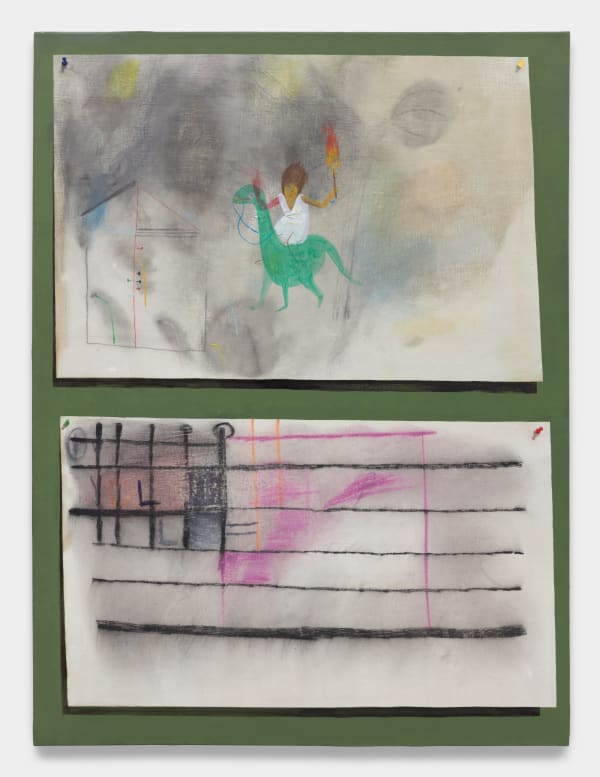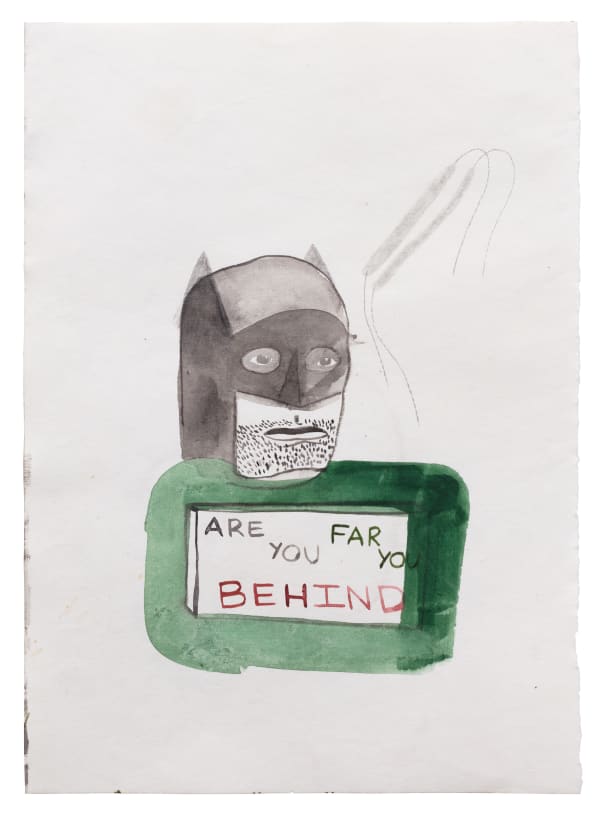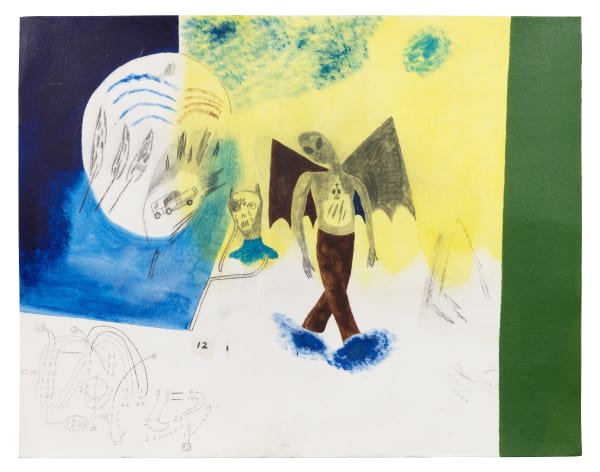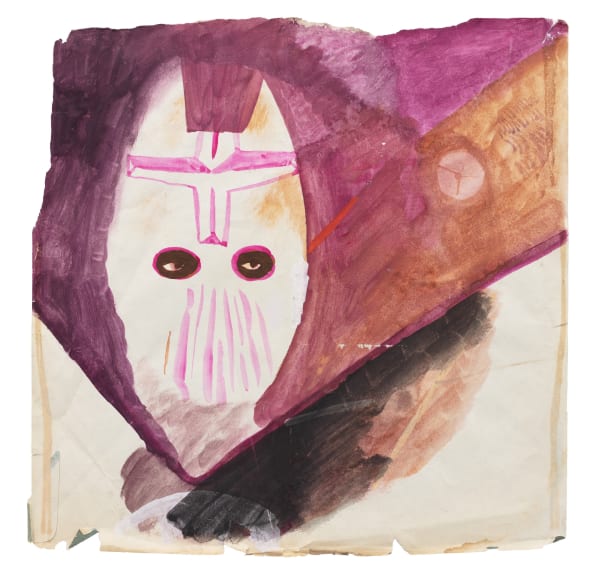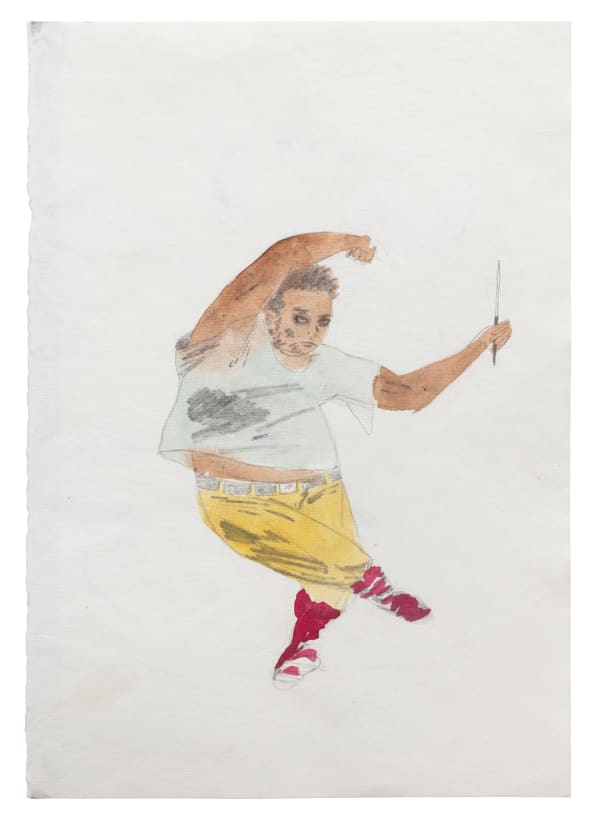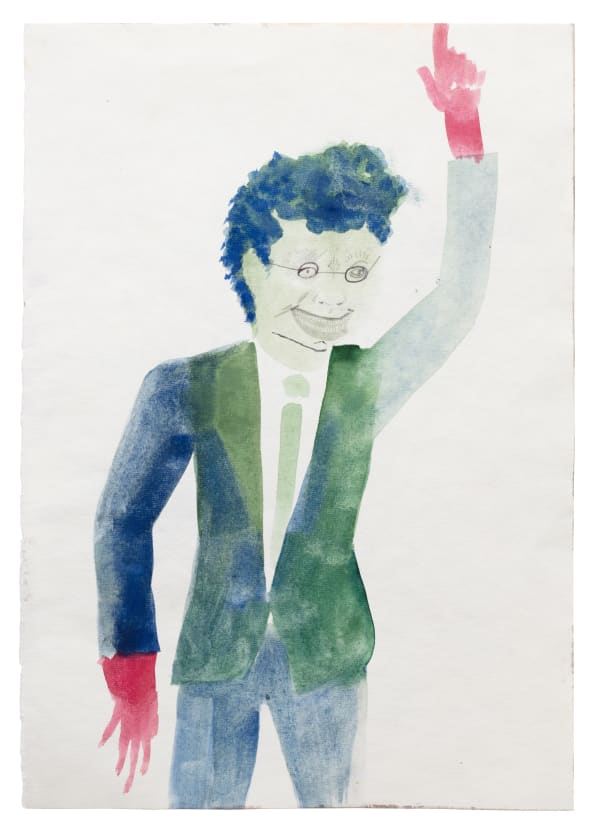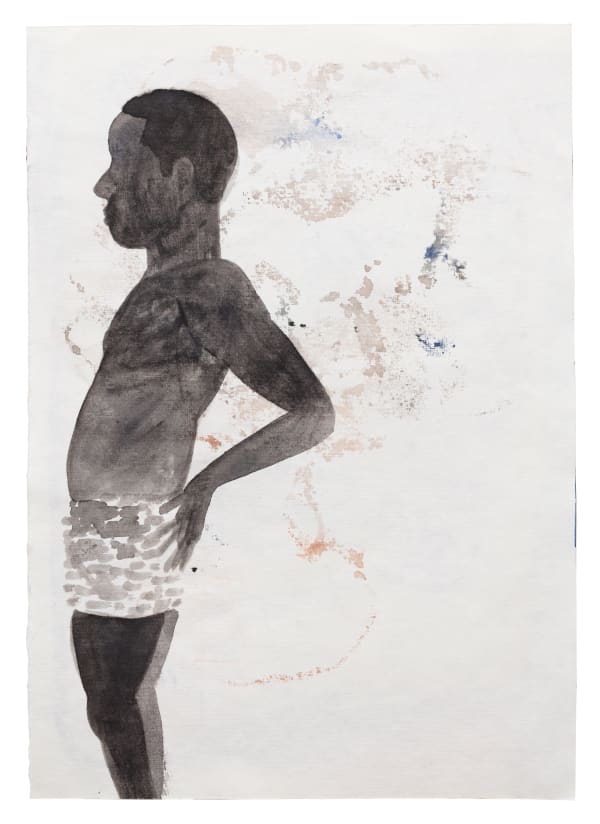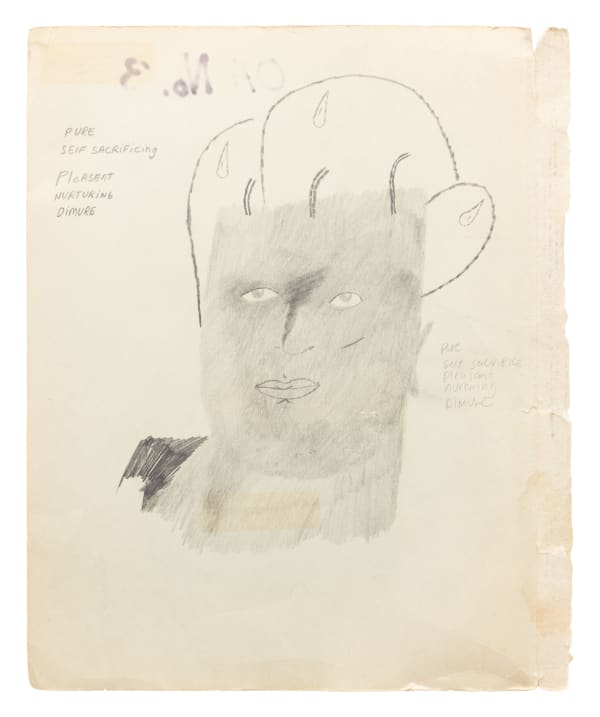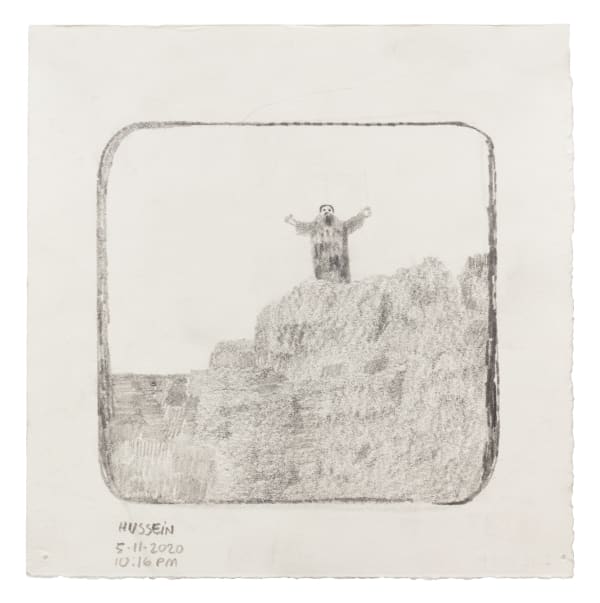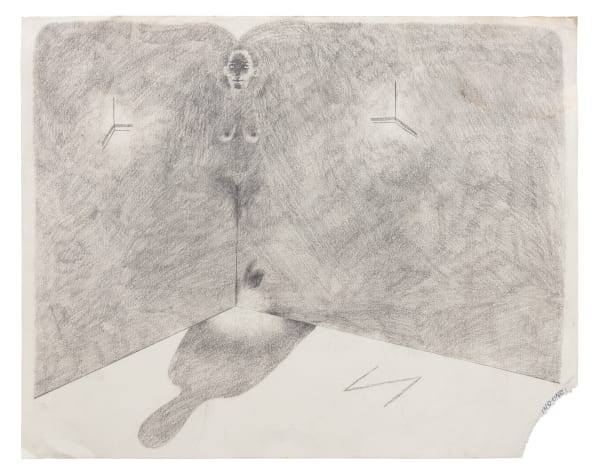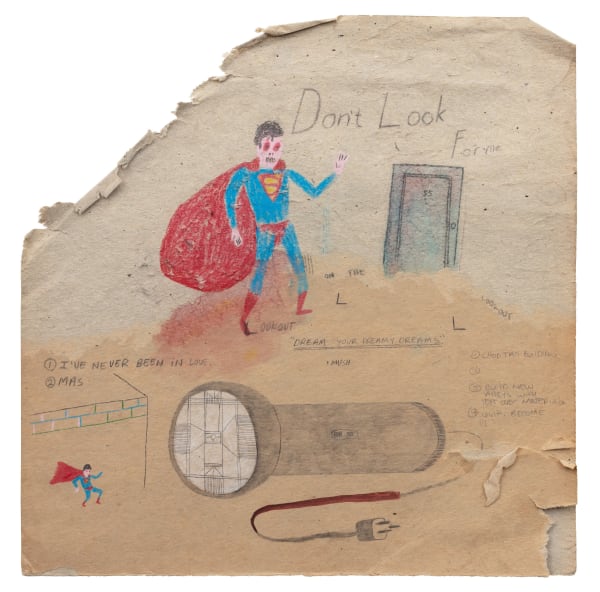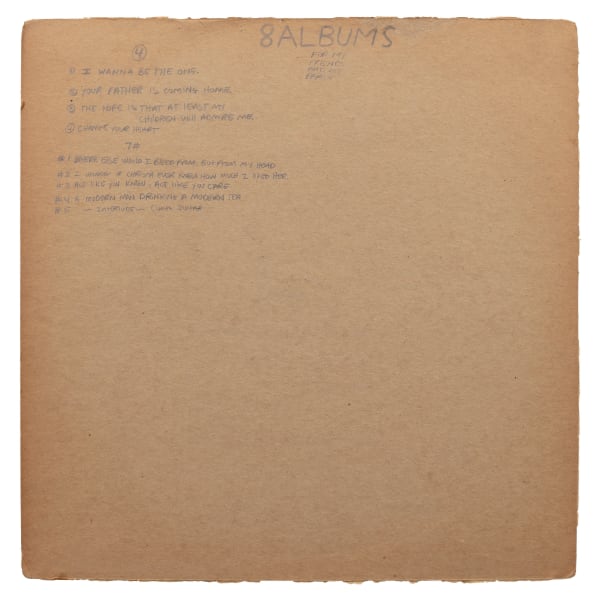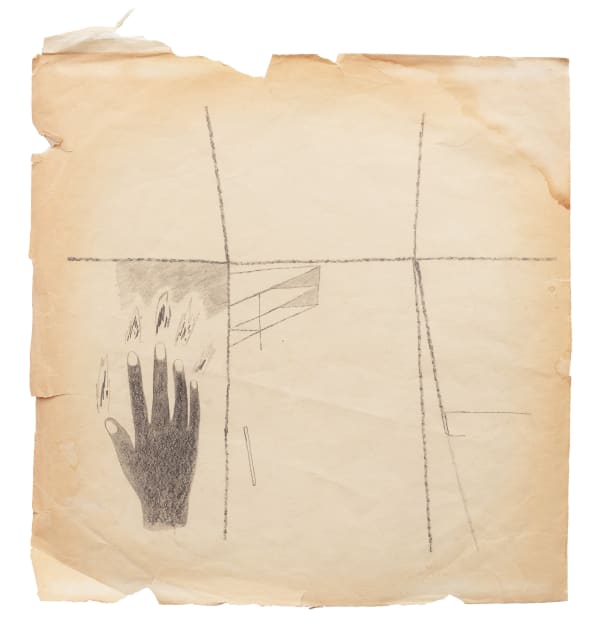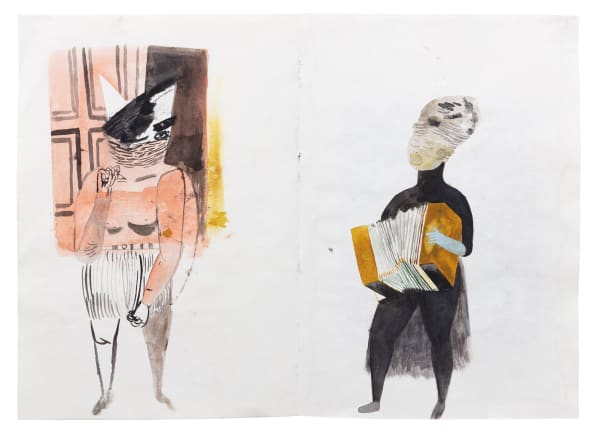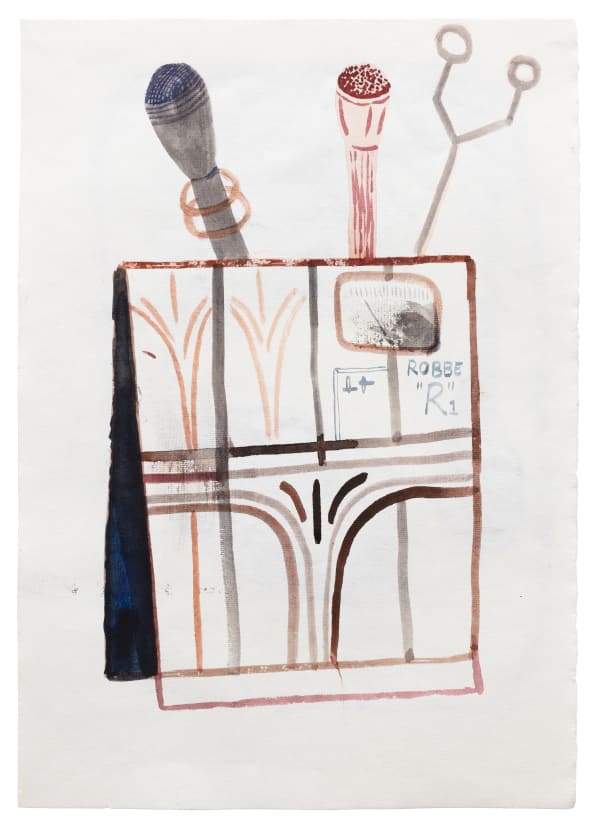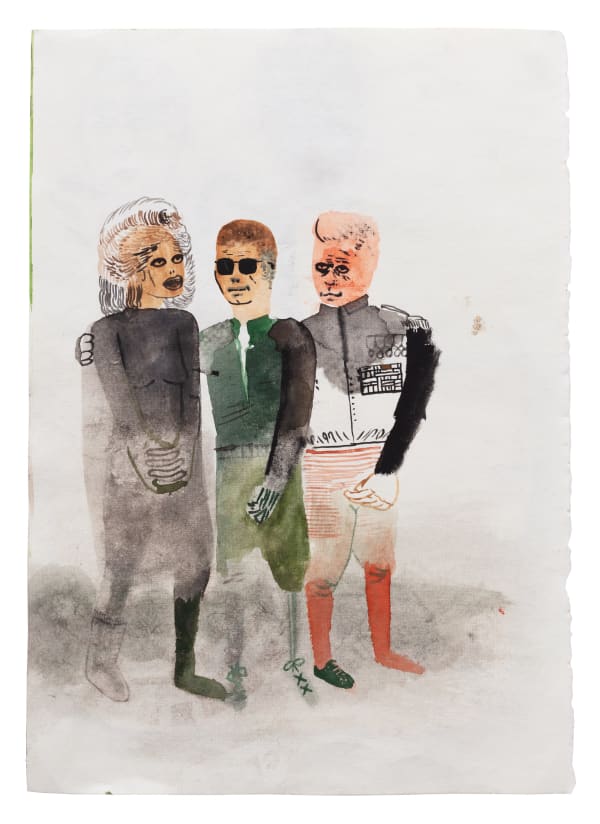Building upon Kenny Rivero's (b. 1981, New York; MFA Yale, 2012) institutional representation in the permanent collections of the Whitney Museum of American Art; the Studio Museum in Harlem; and the Pérez Art Museum Miami-and coinciding with his solo exhibition currently on view at The Momentary at Crystal Bridges-Charles Moffett is pleased to bring Kenny Rivero's debut museum solo show (March-June 2021 at the Brattleboro Museum & Art Center) to The Armory Show.
Rivero has a lifelong fascination with the meaning and histories of everyday objects. His passion for collecting discarded material-initially out of curiosity rather than artistic intention-spiked when he started working as a doorman in a luxury prewar condo building in Gramercy Park (a role, he says, "changed his life" in many ways). The building housed many elderly residents who had lived there for decades, and when they died, their families would discard extraordinary quantities of personal-history imbued belongings. "I felt like I was on the front lines, sorting through this stuff before it officially became 'trash'," Rivero says. "It was like stepping into another era of 'Old New York'."
Narratively, explains Rivero, "the works in this body of drawings point directly to death, violence, fear, faith, spirituality, war, and magic. The setting is an abstracted landscape informed by the people, architecture, culture and aesthetics of Washington Heights in New York. More broadly, the culture of work is autobiographical, and I'm invested in building a knowledge of self as it relates to a variety of areas."
The sentimentality of Rivero's found objects ranges from pages from his parents' wedding album, to strangers' discarded record sleeves (and some fall in between; Vital Signs, for instance, contains a vintage sewing pattern Rivero found in an unfinished nook of his former longtime art studio, a remnant of the building's historic past as a garment factory). While the narrative explorations of his drawings are extremely personal, the conceptual exploration he engages in through the use of reclaimed objects is part of a larger fascination with personal histories in general. He recalls a childhood affinity for chipping paint off walls and imagining stories of what life was like there during each paint layer's reign-in his bedroom, but also in random places around New York City.
On the use of reclaimed materials, Rivero explains: "I have collections of reclaimed paper that eventually become collage elements in my paintings and the supports for my drawings. The surface accumulations, patinas, and the historical aura of reclaimed material allow me to reflect on the past (my own and that of others) and engage with it in a tangible way. In reclaimed material, I'm interested in how the energies and identities contained by certain objects and surfaces can come together to form new things with new pasts and flexible futures. My goal is to excavate and reconstruct the histories and identities I have been conditioned to understand as absolute, in order to develop new ways to intimately engage the world."
The exhibition's title, Palm Oil, Rum, Honey, Yellow Flowers, references the show's overall regard for the extrinsic and subjective meaning of old objects, but also specifically refers to a selection of objects that would be used as a traditional offering to a specific deity in Rivero's Ifa faith. A predominant aspect of Rivero's life and art practice is how his hybrid faith-stemming from a diverse religious upbringing that incorporated Christianity, Vodun, Santeria, and other Afro-Caribbean influenced spiritual practices-has informed his complex relationship with the themes addressed in the exhibition.
Though Rivero is an interdisciplinary artist who shows in a wide range of media, his decision to show this body of paper-based work was in site-responsive consideration of the Brattleboro Museum space itself. Built in 1916 as a heavily trafficked New England train station, the building still retains the architectural features and train station signage (baggage claim, ticketing kiosk, smoking lounge, ladies waiting room) that preceded its conversion to a museum in 1972. Accordingly, Rivero felt that the building had seen a past life in a similar manner as the constituent objects of his works on paper, and that they were therefore the appropriate choice.
Rivero's works on paper are entirely distinct from his painting practice, and are, he explains, "a space for me to reflect and contend with ideas I can't clearly articulate in painting or writing." As someone who has always been fascinated with "the energy trapped inside of historic objects," and who has been creating narrative drawings since he could hold a marker, he considers his paper-based works to be his "first language."
Rivero regards all the pieces in the show as "works in progress." He has been working on each one for up to 12 years and explains that they are also subject to future additions and alterations. He indicates that his works on paper are deliberately nonarchival and intentionally provided elemental exposure for natural signs of aging.
The original iteration of Palm Oil, Rum, Honey, Yellow Flowers was curated by Sarah Freeman, Exhibitions Manager at the Brattleboro Museum & Art Center. Kenny Rivero is represented by Charles Moffett, New York and has solo exhibitions scheduled with Matthew Brown, Los Angeles and Morán Morán, Mexico City.

